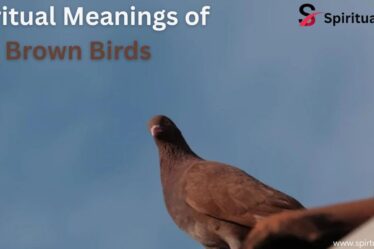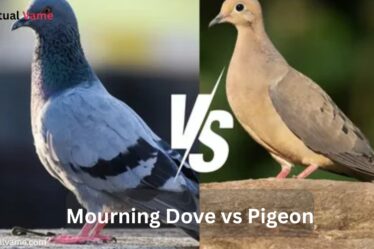
Florida is more than just beaches and sunshine—it’s also home to a diverse mix of birdlife. One group that often surprises visitors is the geese Florida welcomes each year. From local parks to remote wetlands, both wild and domesticated geese can be found across the state. Some are year-round residents while others stop by during migration. Whether you’re a birdwatcher or just someone curious about these feathered travelers, this guide will help you spot, understand, and enjoy these fascinating birds.
Geese in Florida come in many forms—some are large and loud, others small and rare. Some fly thousands of miles to get here, while a few never leave. With their distinct colors, calls, and behaviors, geese play an important role in Florida’s ecosystems. Keep reading to explore all 11 species and learn where and how to see them.
Geese in Florida

Florida plays host to eight stunning goose species that either live in or visit the state. These include native, migratory, and even a few exotic species. One of the most familiar is the Canada Goose, a large bird with a black neck and head, a white cheek patch, and a brown body. It’s a year-round resident in many urban and open fields, often found in parks, near water, or flying in V-shaped flocks. Its loud honking and graceful glide across bodies of water make it hard to miss.
The Egyptian Goose is another striking bird now established in parts of Florida. Originally introduced from Africa, this non-native species has become common in urban parks and water bodies. Its chestnut patches, bright eyes, and distinctive look make it easy to identify. Despite being a domesticated species in many places, wild populations now roam freely.
Every winter, Snow Geese arrive in large flocks, filling the wetlands and agricultural fields with a sea of white and blue morph plumage. With their black wingtips, these birds are a favorite among photographers and birders. The Ross’s Goose, though smaller, appears alongside Snow Geese and can be tricky to spot due to their similar plumage and winter timing. Meanwhile, the Greater White-fronted Goose shows up with its grayish-brown markings, orange legs, and white face. This migratory visitor prefers quiet wetlands and open fields.
The Brant Goose is rare in Florida and usually found along coastal areas. Its black neck and small white collar distinguish it from others. Then there’s the Cackling Goose, which resembles the Canada Goose but is smaller and has a distinct call. Occasionally, a Barnacle Goose makes its way into Florida. These rare visitors display a bold contrast of black, white, and gray with a coastal flair.
Where to find Geese in Florida
You don’t need to go far to spot geese in Florida. These birds thrive in both wild and urban settings. In northern Florida, Paynes Prairie Preserve near Gainesville is a top hotspot, offering wide-open views of wetlands where geese often land during migration. Central Florida’s Lake Apopka Wildlife Drive is another favorite among birders. Flocks of Canada, Snow, and even Ross’s Geese can be seen floating peacefully in the shallow marshes.
If you’re closer to the coast, look for Brant and Barnacle Geese near inlets and estuaries. Down in the south, the Everglades offer remote, quiet spaces that attract geese during the cooler months. For those in cities, don’t overlook local urban parks and golf courses. Places with large ponds, grassy areas, and scattered trees make perfect resting spots for domesticated geese like the Egyptian Goose or Swan Goose.
Geese that can Annually be Found in Florida (4 Species)

Four goose species are dependable visitors or residents in Florida. The most familiar is the Canada Goose, a large black-necked bird with a white cheek patch and a brown body. You’ll see them in parks, fields, and near water bodies across the state. They nest in urban zones and remain present year-round, gliding across open lakes and gathering in flocks.
The Snow Goose is a wintertime favorite. Arriving in impressive flocks, these birds fill the wetlands and agricultural fields with bright white and blue morphs. Their black wingtips contrast with their clean plumage, and their presence often signals peak migration season. Meanwhile, the Ross’s Goose, often traveling with Snow Geese, is smaller and has a short neck and stubby bill. Its soft white plumage and black wingtips make it a subtle delight.
Then there’s the Greater White-fronted Goose, a migratory visitor with grayish-brown feathers, white markings near the bill, and orange legs. It typically prefers quieter fields and wetlands, often keeping its distance from humans. This species is less common than Canada or Snow Geese but still regularly appears in certain habitats during the cooler months.
Canada Goose
Identification: Large size, white cheek patch, black head and neck, brown body
Range: Throughout North America, year-round in many parts of Florida
Diet and Foraging Behavior: Grasses, grains, aquatic plants; grazes in fields and near bodies of water
Where to Find this Bird: Common in urban parks, golf courses, wetlands, and open spaces
Snow Goose
Identification: White or blue morph, black wingtips, pink bill
Range: Migrates from the Arctic to southern U.S. in winter
Diet and Foraging Behavior: Feeds on agricultural crops, roots, and aquatic vegetation
Where to Find this Bird: Seen in wetlands, flooded fields, and wildlife reserves
Ross’s Goose

Identification: Smaller version of Snow Goose, compact build, white with black wingtips
Range: Arctic breeder, winters across the southern U.S.
Diet and Foraging Behavior: Similar to Snow Goose—grains, grasses, tubers
Where to Find this Bird: With Snow Goose flocks in wetlands and agricultural fields
Greater White-fronted Goose
Identification: Grayish body, white forehead, orange legs
Range: Breeds in the tundra, winters in the southern U.S.
Diet and Foraging Behavior: Eats seeds, grains, and plants in fields and wetlands
Where to Find this Bird: Best seen in remote marshes and quiet wetland areas
Geese that Show Up to Florida on Occasion
Some geese don’t show up every year, but when they do, it’s a treat. The Cackling Goose looks a lot like the Canada Goose but is smaller, with a shorter neck and a high-pitched call. It prefers wetlands and mixes with other goose flocks during migration.
The Brant is a coastal goose that prefers saltwater habitats. With a black neck, white collar, and medium size, it’s easy to spot in the right places—if you’re lucky. It’s considered a rare visitor and usually appears in coastal areas or inlets.
Even rarer is the Barnacle Goose, a striking black and white goose seen only on occasion. With a bold black neck and collar, and stark white face, it’s a surprise guest that sometimes turns up along Florida’s coast or in large wetland preserves.
Conclusion
The geese Florida shelters are more than just seasonal birds. They’re storytellers of migration, evolution, and adaptation. Whether you’re watching a V-shaped flock glide over a lake or spotting a rare visitor in a field, each encounter brings a new sense of wonder. From Canada to Cackling, from gray Greylags to elegant Bar-headed Geese, the diversity is stunning.
So the next time you pass a pond or look across a marsh, take a moment to look for movement. You might just see a white patch, hear a honk, or catch sight of wings beating against the sky. Florida isn’t just a place for people—it’s a resting haven for waterfowl from around the world.



